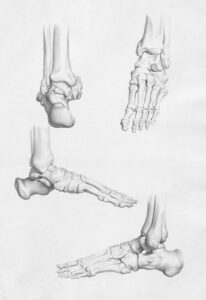Conjoined twins are a rare and fascinating phenomenon, occurring once in approximately every 200,000 live births. These twins are physically connected at birth and may share organs, limbs, or other bodily systems, depending on the type and extent of their connection. The life experiences of conjoined twins are unique, shaped by physical proximity and an extraordinary level of mutual dependence. One question that often arises in the context of their unique bond is whether conjoined twins die together. Given the diversity in types and medical complications associated with conjoined twins, the answer to this question varies and is far from straightforward.
Understanding if conjoined twins die together depends on several factors, including where they are connected, the extent to which they share organs, and the individual health of each twin. This article will explore the types of conjoined twins, medical factors influencing their survival and health, and the circumstances under which they might—or might not—die at the same time. By examining case studies, medical insights, and ethical considerations, we can gain a deeper understanding of this complex issue.
Types of Conjoined Twins and Shared Organs
To understand how death might occur in conjoined twins, it’s essential to examine the types of conjoinment and the extent to which they share organs. Conjoined twins are classified according to the part of their bodies that is joined, with some common types including:
- Thoracopagus – Joined at the chest, often sharing a heart and liver. Thoracopagus twins are among the most complex cases due to shared vital organs, especially the heart.
- Omphalopagus – Connected at the abdomen, commonly sharing organs such as the liver and intestines, but not the heart.
- Craniopagus – Joined at the head, sharing parts of the skull and sometimes the brain.
- Ischiopagus – Joined at the pelvis and may share the lower gastrointestinal tract and genitourinary system.
- Pygopagus – Connected at the sacrum or lower back, often sharing lower spinal structures and possibly the gastrointestinal system.
Each type of conjoinment presents unique medical challenges. In cases where twins share a single heart or liver, as in many thoracopagus twins, their survival is highly interdependent. If one twin experiences heart failure, for example, the other twin may be immediately affected, making it more likely that they would die close in time to each other. However, twins connected in ways that do not involve shared vital organs may have independent cardiovascular, respiratory, and nervous systems, allowing for a more distinct survival path for each twin.
The Role of Shared Vital Organs in Survival and Death
In instances where conjoined twins share vital organs, the medical complications increase significantly, especially in regard to survival and longevity. For example, twins who share a single heart cannot be surgically separated without endangering both lives. In cases like this, the death of one twin would almost certainly affect the survival of the other. If the shared heart fails, both twins would likely succumb close to the same time due to the loss of blood circulation and oxygen.
Even when conjoined twins do not share a heart, they might still share other vital organs, such as a liver or parts of the circulatory system. While the liver is not a pump like the heart, its failure can lead to life-threatening conditions affecting both twins, especially if they share blood flow. In such cases, the metabolic processes that filter toxins and support bodily functions are interconnected, meaning the failure of a single liver could compromise both twins’ health.
When Death Occurs at Different Times
Despite their physical connection, there are cases where conjoined twins die at different times, especially when they do not share a heart or other crucial organs that would cause simultaneous systemic failure. If twins have mostly independent systems and only minor organ sharing, one twin can, theoretically, pass away before the other. In these situations, several factors play a role:
- Health Conditions: If one twin has a health condition affecting only their side of the body or organs unique to them, that twin could experience complications that lead to death, without directly impacting the other twin’s immediate survival.
- Circulatory and Nervous System Independence: Twins with separate circulatory systems or largely independent nervous systems are more likely to survive independently of each other.
- Life Support and Medical Intervention: In cases where one twin is unable to survive on their own but the other twin has independent systems, doctors may use life-support measures to sustain one twin until a separation can occur or alternative solutions are identified.
A notable case is that of Tatiana and Krista Hogan, craniopagus twins from Canada who share parts of their brain but have largely separate bodies. They share sensory experiences and certain neural functions but retain separate circulatory systems. This unusual neural connection allows them to share certain thoughts and emotions, but it also means that one twin could theoretically survive if the other passed away, as they do not depend on the same circulatory or respiratory systems. However, the psychological and ethical implications in cases like theirs make medical interventions a deeply complex process.
Surgical Separation and Its Implications
The possibility of surgical separation adds another layer to understanding how and when conjoined twins might die. The decision to separate conjoined twins depends on numerous medical, ethical, and practical considerations:
- Feasibility and Risk: Surgical separation is only considered when each twin has a reasonable chance of survival. For twins who share a heart or significant portions of their nervous systems, separation is often impossible or poses severe risks to both twins.
- Emergency Situations: In cases where one twin’s health deteriorates rapidly, an emergency separation may be attempted to save the life of the surviving twin. This situation is more common when only non-vital organs are shared.
- Quality of Life Considerations: In instances where separation is possible, families and medical professionals must weigh the potential benefits against the risks and possible complications of separation.
Notably, the decision for separation can be made even if one twin has passed away, although it is rare. The separation process is urgent in such cases, as leaving the surviving twin attached to a deceased sibling can pose severe health risks, including infection or sepsis.
Ethical and Psychological Dimensions of Death in Conjoined Twins
The prospect of one conjoined twin dying before the other raises ethical and psychological concerns for families, caregivers, and medical professionals. For twins who are highly dependent on each other, the survival of one twin could create unique emotional and psychological challenges, especially if the surviving twin has been dependent on the deceased twin for sensory, emotional, or physical support. Families must grapple with difficult decisions about life support, potential separation, and quality of life for the surviving twin, which can be emotionally and ethically overwhelming.
In cases where twins share limited organs and have separate neurological systems, the surviving twin may face significant psychological trauma and grief. Growing up physically attached to another person creates an inseparable bond and sense of identity, which can make the loss of a conjoined twin a profoundly distressing experience. For surviving conjoined twins, the loss can result in feelings of isolation, confusion, and identity challenges, as they navigate life without their constant companion.
Case Studies Illustrating Different Outcomes
Throughout history, there have been several notable cases of conjoined twins whose life experiences shed light on how and when death might occur:
- Chang and Eng Bunker: Known as the “original Siamese twins,” Chang and Eng Bunker were born in 1811 in Thailand and connected at the chest by a small band of cartilage. They had separate hearts and largely independent bodily systems. In 1874, Chang died of a stroke while the brothers were in bed together. Eng, unable to receive adequate medical care, died a few hours later, likely from shock or grief. Their case illustrates how physical dependence, even in the absence of shared organs, can affect the surviving twin’s mortality.
- Tatiana and Krista Hogan: Tatiana and Krista Hogan, Canadian craniopagus twins born in 2006, are connected at the head and share parts of their brains. Remarkably, they can perceive each other’s thoughts and sensations, yet they retain separate bodies and largely independent physiological systems. Their case suggests that, if one twin were to pass away, the other might survive, though medical intervention would likely be necessary to prevent complications.
- Abby and Brittany Hensel: Abby and Brittany Hensel, born in 1990 in Minnesota, are dicephalic parapagus twins, meaning they share a body but have separate heads and brains. Each twin controls one side of their shared body and they have separate spinal cords and hearts. Their case illustrates how twins with distinct bodily systems can lead relatively independent lives, each with unique preferences and identities, making it possible (though unlikely) that one twin could survive without the other.
These case studies highlight the variability in how conjoined twins might experience death and how medical science can sometimes intervene to prolong the life of one twin even if the other has passed away.
Medical Advances and the Future for Conjoined Twins
Advances in medical technology and surgical techniques have improved outcomes for conjoined twins, making survival more viable and, in some cases, enabling successful separation. Innovations in imaging and prenatal diagnostics now allow doctors to better understand the anatomy of conjoined twins, assess shared organs, and develop plans for potential separations. In cases where the twins cannot be separated, ongoing advances in palliative care and supportive technologies may improve the quality of life for conjoined twins, helping them manage shared conditions and health complications.
As medicine continues to advance, the question of whether conjoined twins die together may become more answerable on a case-by-case basis. Future possibilities include more sophisticated surgical techniques for separations that may not have been feasible in the past, as well as improved supportive care for twins who remain conjoined.
Conclusion
Whether conjoined twins die together is a question that ultimately depends on the specifics of their physical connection, the degree of shared organs, and the nature of their medical care. In cases where twins share a heart or liver, their deaths are often closely tied due to the interdependence of their bodily systems. However, twins with separate hearts, lungs, and nervous systems may survive independently for a time if one twin dies, depending on individual health factors and the extent of their connection.
The ethical, medical, and psychological dimensions of life and death for conjoined twins reflect the unique nature of their existence. Their lives, often lived in extraordinary closeness, challenge our understanding of individuality, interdependence, and resilience. Although medical science has made significant advances, the death of one conjoined twin continues to present complex challenges that involve considerations of identity, autonomy, and survival, making each case as unique as the individuals involved.




